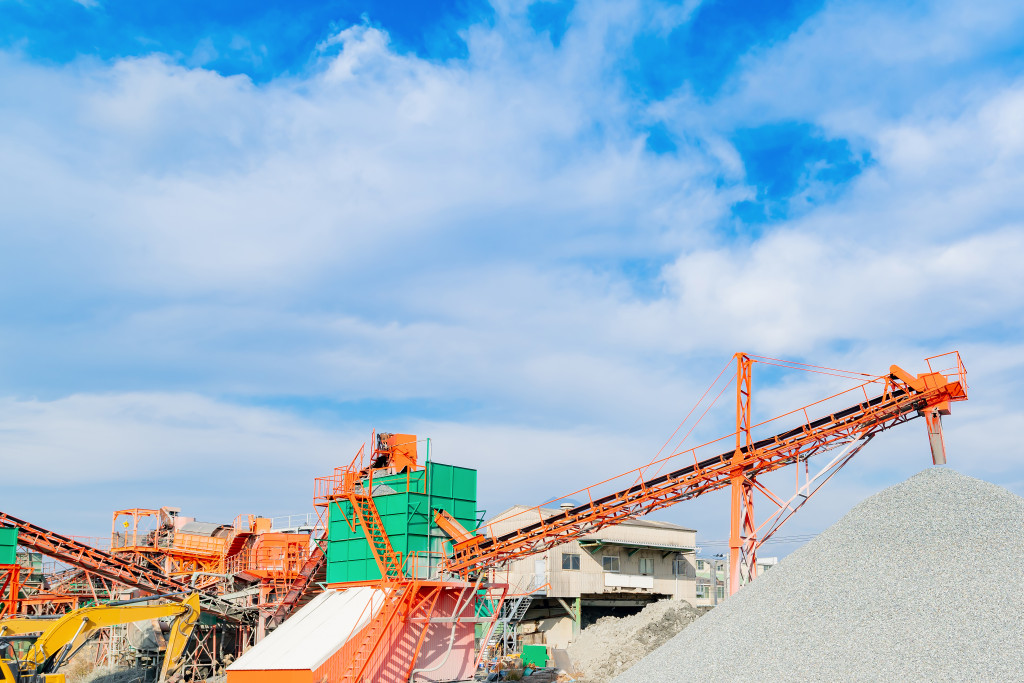- Operational efficiency in the cement industry aids cost-saving through waste reduction and productivity improvement.
- Preventive maintenance and regular mill liner inspection help avoid expensive equipment repairs and breakdowns.
- Energy and resource management can lead to substantial savings by minimizing waste and energy consumption.
- Implementing cost-effective labor practices, such as optimizing workflows and leveraging technology, can significantly reduce expenses while maintaining productivity.
- Adopting eco-friendly practices assists in environmental compliance, reducing carbon footprint, and improving community relations.
The cement industry is crucial in the global economy, contributing significantly to infrastructure development. With the ever-increasing importance of cement, it has become imperative for cement manufacturers to streamline their operations and find ways to reduce costs while enhancing efficiency.
The ongoing global pandemic has further highlighted the need for cost-efficiency across all industries, including cement manufacturing. The importance of cost efficiency cannot be overstated. Cement manufacturers are under pressure to optimize their processes and minimize expenses without compromising the quality of their products.
By identifying areas of improvement and implementing cost-effective measures, such as optimizing energy consumption and reducing waste, cement manufacturers can enhance their operational efficiency and maintain profitability in a challenging economic environment.
Moreover, the increasing demand for sustainable practices in the construction industry further emphasizes the significance of cost efficiency in the cement sector. As environmental concerns continue to grow, cement manufacturers must find innovative ways to minimize their carbon footprint and embrace more eco-friendly manufacturing processes.
This blog post will explore ways cement manufacturers can streamline operations to improve efficiency while controlling expenses.
Operational Efficiency
Operational efficiency is one of the most significant contributors to cost-saving in the cement industry. Cement manufacturers should optimize their processes to reduce waste, minimize downtime, and improve productivity. These are effective ways to achieve operational efficiency:
Preventive Maintenance Strategies
Preventive maintenance strategies are crucial to reducing costs associated with faulty equipment. By regularly maintaining equipment, cement manufacturers can avoid unexpected breakdowns and reduce the cost of repairs.
Adopting preventive maintenance strategies also ensures that equipment operates at peak performance, which translates into substantial savings in energy consumption.
Mill Liner Inspection
Mill liners protect the mill shell and grinding media from wear and tear during milling. Regular mill liner inspection is paramount for cement manufacturers seeking to maximize cost savings. Inspecting mill liners regularly enables manufacturers to detect issues early and replace them.
It prolongs the mill’s life and reduces maintenance costs. Additionally, well-maintained mill liners can improve grinding efficiency and reduce energy consumption.
Energy Management
Energy management is another avenue for cost-savings in the cement industry. Cement manufacturing is an energy-intensive process requiring manufacturers to adopt energy-efficient technologies.
Efficient use of energy can translate into significant cost savings. For example, modern kiln technologies consume less energy than traditional technologies.
Resource Management
Effective resource management can lead to substantial cost savings in the cement industry. Cement manufacturers can optimize their use of raw materials and other resources to minimize waste and reduce costs.
One way to optimize resource management is through an integrated production and supply chain management system that ensures suitable materials are used at the right time to minimize waste.

Cost-Effective Labor Practices
Labor is a significant cost driver in the cement industry. Cement manufacturers can adopt cost-effective labor practices to reduce costs while maintaining productivity. Some ways to achieve this is through the following:
Workforce Training and Development
Workforce training and development should be an ongoing process to improve the workforce’s skills and knowledge. Investing in training and development also improves employee engagement, job satisfaction, and retention rates, which translates into cost savings.
Staffing Optimization
Staffing optimization is another cost-efficient labor practice. Cement manufacturers should optimize staffing levels and procedures to ensure resources are used efficiently. This may include streamlining the hiring process, outsourcing non-core functions, and automating administrative tasks.
Employee Engagement
Employee engagement is crucial to reducing costs in the cement industry. Engaged employees are more committed, productive, and innovative, which improves efficiency and reduces costs.
Cement manufacturers should prioritize employee engagement through various initiatives, including recognition programs, inclusion in decision-making processes, and promoting work-life balance.
Sustainable and Eco-Friendly Practices
In today’s world, sustainability and eco-friendliness have become paramount, especially in the cement industry. Cement manufacturers should adopt sustainable and eco-friendly practices such as:
Environmental Compliance
Environmental compliance ensures that cement manufacturers operate within regulatory guidelines governing the use and disposal of hazardous materials. Compliance enables manufacturers to avoid costly fines, lawsuits, and reputational damage.
Eco-Friendly Technologies
Cement manufacturers can adopt eco-friendly technologies to reduce their carbon footprint while improving efficiency. For example, waste heat recovery systems can capture and utilize waste heat generated during cement production to produce electricity.
Community Relations
Cement manufacturers should prioritize community relations initiatives through various programs and partnerships. Engaging with local communities increases stakeholder trust, improves reputations, and can reduce the risk of costly legal problems.

Cost-saving solutions are essential for cement manufacturers seeking long-term sustainability and profitability. Cement manufacturers can improve their efficiency by adopting budget-friendly strategies while reducing expenses.




